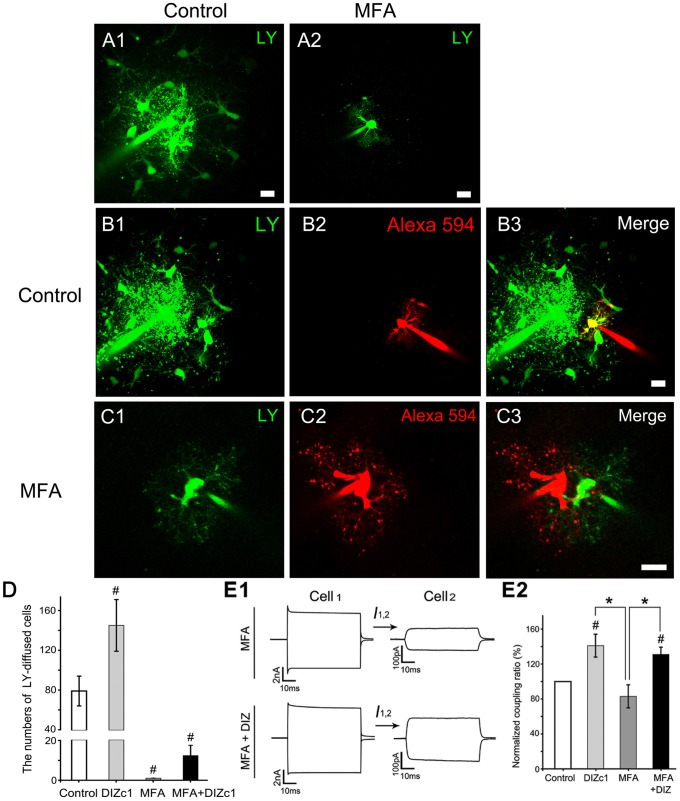Figure 5. MFA, a gap junction inhibitor, blocked the tracer coupling but not electrical coupling and was unable to block the mitoKATP channels’ effects on electrical coupling of directly coupled astrocytes.
The Loading of LY into cells for 10 min resulted in transcellular diffusion (A1, bar = 10 µm) but not when cells were pre-treated with MFA (A2, bar = 20 µm). Furthermore, the separate loading of LY (green, C1) and Alexa Fluor® 594 (red, C2) into cells via dual patch recording electrodes for 10 min also did not lead to transcellular diffusion of the two tracers upon pre-treatment of the slices with MFA 1 h prior to recording. However, when the slices were not pre-treated with MFA, we observed transcellular diffusion of LY (green, B1) but not Alexa Fluor® 594 (red, B2) (bar = 10 µm). (D) Bar graph shows that DIZ significantly increased the transcellular diffusion of LY (DIZc1, n = 9), MFA inhibited the transcellular diffusion of LY (n = 7), and DIZ increased the transcellular diffusion of LY even after pre-treatment of the slices with MFA 1 h prior to recording (n = 10). (E1) Representative electrical coupling trace of recorded astrocyte pairs after incubation with DIZ for 5 min under conditions with or without MFA pre-treatment. (E2) Bar graph shows that MFA inhibited the coupling ratio by 17% (n = 8), while at 5 min after loading the cell with DIZ, the MFA inhibited the coupling ratio only by 7% (n = 12). These results were determined from paired recordings from astrocytes at interastrocytic distances of 20 – 40 µm. Mean ± SEM; * P<0.05. # P<0.05 compared to the control. MFA, Meclofenamic acid; DIZ, Diazoxide; 5-HD, 5-hydroxydecanoate.

